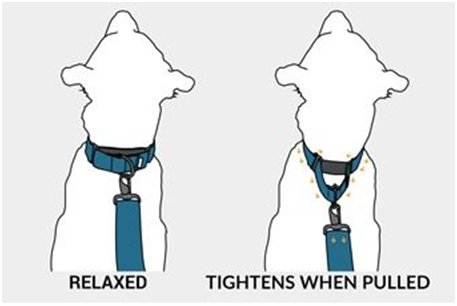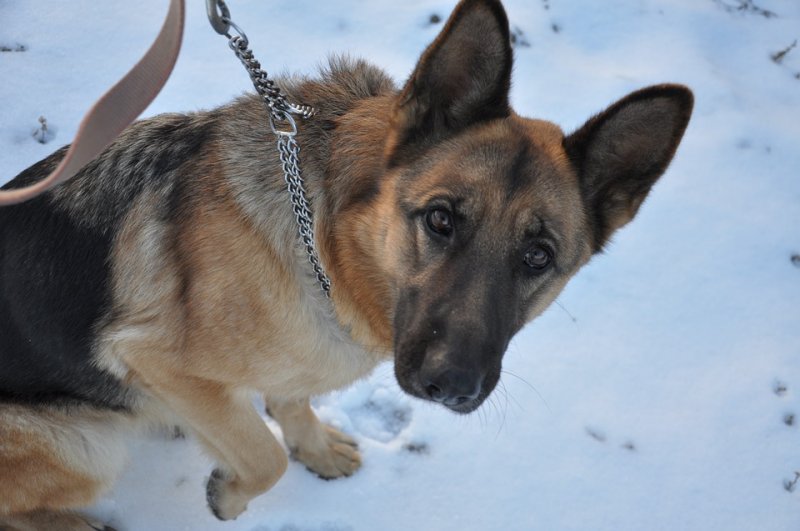6 min read
1186 words
Dog training collars are a powerful tool for pet owners looking to improve their dog’s behavior. These collars can help with everything from basic obedience to correcting bad habits. In this post, we will explore the different types of dog training collars, how to use them effectively, and tips for choosing the right one for your dog. Whether you’re a first-time dog owner or an experienced trainer, understanding training collars can make a big difference in your training journey.
It is best to start training your German Shepherd when they are about eight weeks old. Early training will aide in shaping your bond with your dog and shaping their personality to your liking. The main point to remember is to keep the training positive. There are several dog training methods that can be used. In this article we will talk about using a collar or a harness for your German Shepherd dog.
There are several types of dog training collars that can be used. Keep in mind that some training collars can produce unwanted results. Positive training is the best for your German Shepherd dog and for you.
Negative Response Training Devices

-
Pinch Collar
A pinch collar also known as the prong collar is the least favorite of training collars. It is made from metal with links that interlock and have metal prongs that face inward. When pressure is applied the collar tightens lightly causing a pinching feeling on the dog’s neck all around. If you use small prongs the pinch will be sharper. The pinch collar is not a form of positive training. It replicates the feeling of dog’s teeth on their neck. This will possibly aggravate your dog and may cause aggression issues. Unlike like the choke collar the pinch collar will not choke your German Shepherd dog as it will only tightens so far.
-
Choke Collar
A choke collar is another method that is not a form of positive training. It is usually a chain or rope with a slip knot that is put around the dog’s neck. As your
 dog pulls, the rope or chain tightens, choking them. Some like this as a form of escape proof for handling their dog. However, this method can confuse your dog during training causing the same behavior as the pinch collar. Unlike the pinch collar which will only tighten so far, the choke collar tightens without restriction thus possibly harming your German Shepherd.
dog pulls, the rope or chain tightens, choking them. Some like this as a form of escape proof for handling their dog. However, this method can confuse your dog during training causing the same behavior as the pinch collar. Unlike the pinch collar which will only tighten so far, the choke collar tightens without restriction thus possibly harming your German Shepherd.
-
Anti-Bark Collar
An anti-bark collar is a collar with a device that senses when your dog barks and either uses a shock or citronella sense that will irritate your German Shepherd’s nose, thus a form of discipline. Although your dog barks for a reason, this type of collar will hide why your dog is barking as well as frustrate them as to why they are getting a shock when their family might be in danger. As always positive training is the best and safest and this collar does not fit the criteria.

-
Invisible Fence Collar:
You use the invisible fence collar in conjunction with an invisible barrier that you place around your yard. The German Shepherd’s collar will either tone or vibrate to warn your dog when they are getting to close to the barrier. Some like this collar as they don’t have to build a fence, allowing their dog to run freely and get exercise. Overall I find that the invisible fence collar is not the best training method.

Positive Response Training Harness or Collar
-
Martingale Collar:
This collar utilizes a positive form of training. The collar has two parts. One is a regular buckle collar. It also has a slip that goes over the German Shepherds head and stays loose till they pull against it. This collar will only tighten to a certain point, there is no pinching or choking. This collar works good for those dogs who have a narrow head.

-
A Remote Dog Training Collar:
This collar works on tone. The collar has a device that is attached to it and goes around your German Shepherd dog’s neck. The handler holds a remote and uses it to signal the dog in training with a tone. You then combine it with a reward. When your dog hears the tone they know to return to you,. Should they get in trouble by running towards traffic you can give your dog a shock to get them to come back to you . A dog shock collar with remote control is useful if your dog has a habit of running away from you or taking off as soon as you open the door. Overall this form of collar utilizes a positive training method.

-
Chest Harness:
This harness goes around your German Shepherds chest, over the back and behind their front legs. This harness helps control pulling and puts pressure on their chest instead of their neck. If your German Shepherd continues to pull in their harness, stop and let them rest. Too much pulling could hurt your dogs shoulders. This type of harness will not cause your German Shepherd dog to become aggressive toward you, making it a good method of training. With this harness it is also hard for the dog to slip out of. Make sure you get the right size harness for your dog. A collar that is too small can cause injury.

-
Head Harness:
This harness makes it easy to control your German Shepherd dog. It is also gentle for handlers that may have health issues. The harness is much like that of halters for a horse. It slips over the dog’s nose and head, and you can control a large animal with this harness. The main thing is getting your German Shepherd dog acclimated to the muzzle piece. This may take some treats to train her to leave it on. Your dog, once she is acclimated to the harness will not feel pain or be uncomfortable. This harness could also be used in conjunction with the chest harness if needed.

German Shepherds dogs are very active and full of energy. You are going to want to be patient and use positive training. You want to be able to control your dog so that they are safe as is everyone around your dog. The head harness for your German Shepherd dog is the best. It gives you good control over your dog, with no pain, and is comfortable enough for your dog to wear. This harness is also easy for the handler to use.
Training collars can be effective tools for dog owners when used properly. They offer a way to enhance communication, reduce unwanted behaviors, and strengthen the bond between you and your pet. Remember to choose the right type of collar for your dog’s needs and to use it consistently and humanely. Always focus on positive reinforcement alongside any tool you choose. For the best results, educate yourself on proper training techniques and be patient with your furry friend. Start your journey towards better training today and create a happier home for both you and your dog.

 dog pulls, the rope or chain tightens, choking them. Some like this as a form of escape proof for handling their dog. However, this method can confuse your dog during training causing the same behavior as the pinch collar. Unlike the pinch collar which will only tighten so far, the choke collar tightens without restriction thus possibly harming your German Shepherd.
dog pulls, the rope or chain tightens, choking them. Some like this as a form of escape proof for handling their dog. However, this method can confuse your dog during training causing the same behavior as the pinch collar. Unlike the pinch collar which will only tighten so far, the choke collar tightens without restriction thus possibly harming your German Shepherd.
German Shepherd are amazing animals.Personally I don’t like training collars !
Yes, German Shepherds are commonly described as excellent Breed, and easy to train. But they also hold a variety of wonderful characteristics such as intelligent, alert, watchful, curious, obedient, courageous, and confident. But They can also be trained without training collars. I know there are some valid reasons to use collars. But love to see them free.